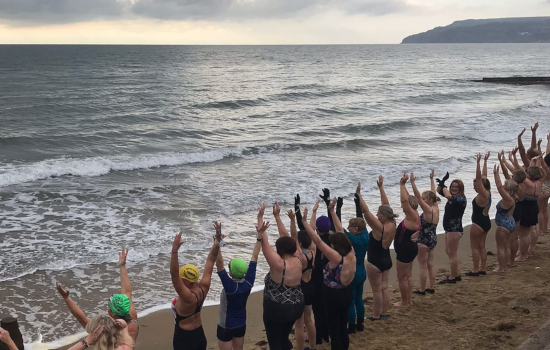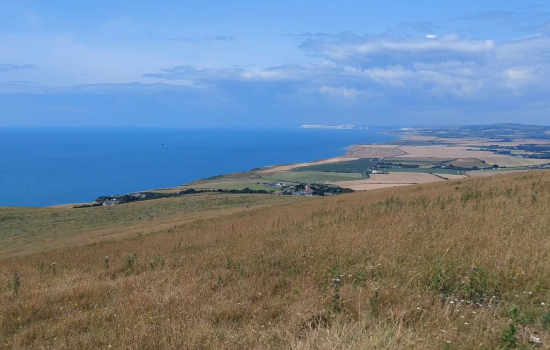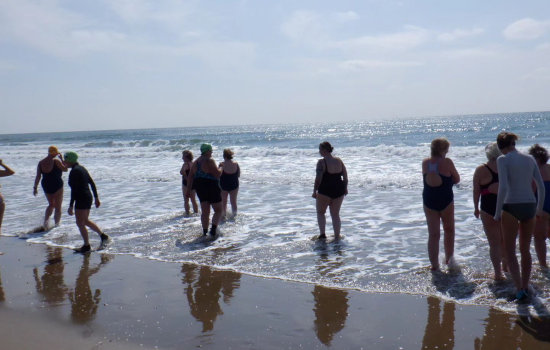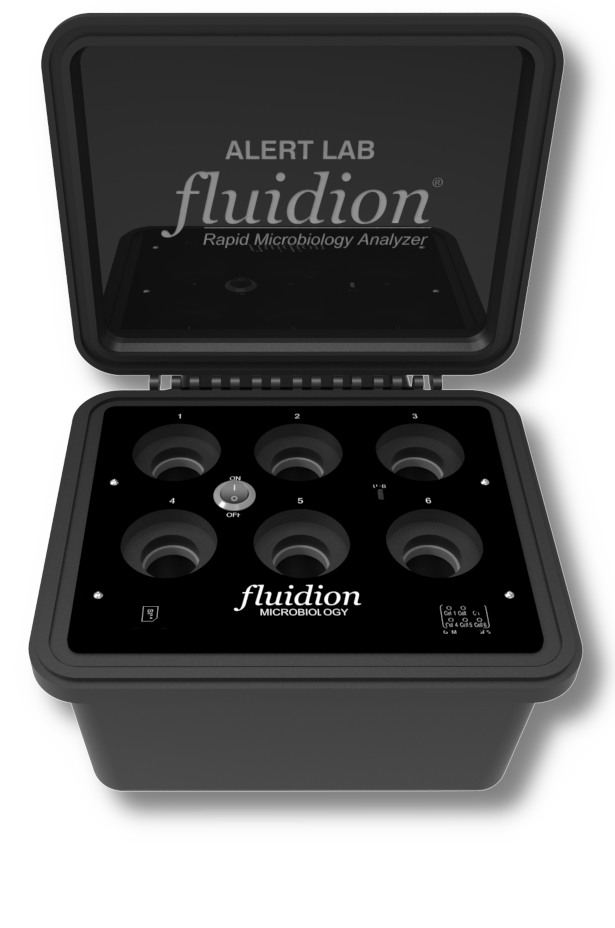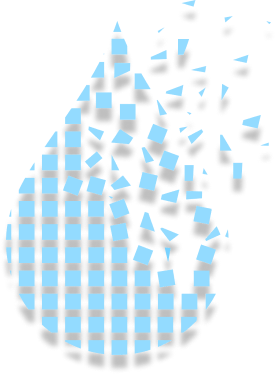
Isle of Wight Open Sea Swimming
Citizen scientists at Swim the Wight and Wildheart Animal Sanctuary are using ALERT LAB to guarantee water safety for open sea swimmers
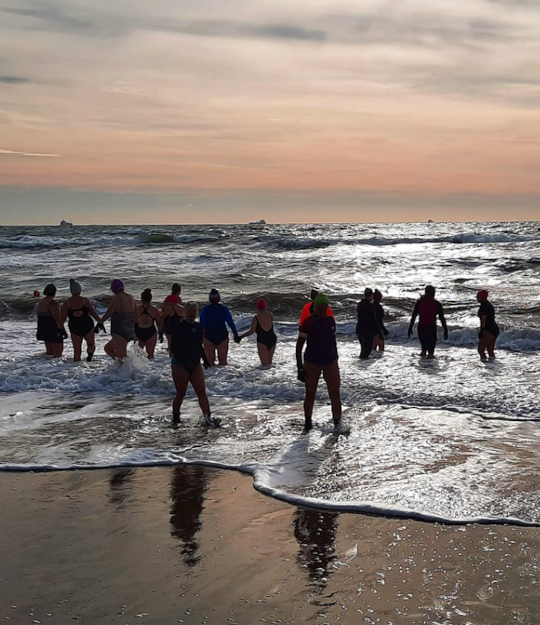
Context
The Isle of Wight is a well-known touristic destination, attracting thousands of visitors every year due to its stunning coastal landscapes, historical sites, and recreational activities. With diverse marine and coastal wildlife, it is also home to the Wildheart Animal Sanctuary, which monitors environmental conditions affecting local marine life. Sandown Bay on the Isle of Wight is a popular destination for open-water swimming, with local community groups such as Swim the Wight organizing swims year-round. Swim the Wight provides regular open-sea swimming opportunities to over 100 active swimmers. However, regulatory water quality testing by the UK Environment Agency (UKEA) is performed infrequently—at best weekly, more often biweekly, and only during summer months—leaving potential gaps in data essential for ensuring safe swimming conditions.
To address this, Swim the Wight and the Wildheart Animal Sanctuary partnered with Fluidion to implement daily water quality testing using the ALERT LAB technology. The testing is sponsored by the local water utility, Southern Water. The goal is to provide real-time, high-resolution data on water quality to complement regulatory sampling and ensure that swimmers had up-to-date information year-round. This would allow identifying short-term pollution events early on and protect users from contact with contaminated waters prone to contain different forms of pathogens from untreated sewage. Given that open sea swimming provides risks of water ingestion and many of the users practicing open sea swimming on the Isle of Wight are elderly people, who are sensitive to presence of pathogens in the water, ensuring water safety is crucial for protecting their health.
The teams' objective was to provide the most accurate microbiological risk monitoring possible, going way past current regulatory requirements. Automated technologies like Fluidion's ALERT LAB, which delivers rapid results with levels of accuracy comparable to the laboratory while going around the limitations of the standard lab methods, provided an adequate solution for on-site testing.
Photos courtesy of Swim the Wight.
Challenges
- Limited regulatory testing frequency: UKEA’s sampling was too infrequent to capture daily variations in water quality, particularly outside of summer months.
- Potential underestimation of contamination risks: Traditional laboratory methods may fail to detect bacteria aggregates, which can lead to misleadingly low E. coli readings.
- Need for real-time decision-making: Swim the Wight needed a rapid, reliable, and frequent testing solution to ensure safe conditions for swimmers throughout the year.
- Regulatory Limitations: Strong local support for more comprehensive, science-based approaches to water quality monitoring, particularly during short-term pollution events.
Solution provided
To address these challenges, two Fluidion ALERT LAB units were deployed at Sandown Bay to enable daily water quality monitoring. Volunteers from Swim the Wight and The Wildheart Animal Sanctuary were trained to operate the equipment, ensuring that data collection followed standardized procedures. The Fluidion science team held regular meetings with the local users to assist with protocol implementation, data interpretation, and technical support.
To enhance confidence in the technology, two ALERT LAB units were frequently tested in parallel, demonstrating strong correlation between results and validating the reliability of the measurements. The results from these tests were compared with UKEA laboratory data, reinforcing the accuracy of the ALERT LAB’s real-time capabilities while also highlighting gaps in standard regulatory methods.
Another key aspect of the project was analyzing filtered and unfiltered samples to determine the impact of bacterial aggregates on water quality assessments. This approach provided deeper insights into contamination patterns and potential health risks, ensuring that Swim the Wight could make well-informed decisions for swimmer safety.
The ALERT LAB units were sponsored by Southern Water, the local water and wastewater utility provider, which recognized the value of high-frequency testing in complementing its own monitoring efforts. Community engagement played a vital role in the project’s success, as the sampling program involved a diverse group of trained volunteers, including swimmers, citizen scientists, and park rangers. The ease of use of the ALERT LAB technology allowed individuals with no prior scientific experience to effectively contribute to the data collection process, reinforcing the role of citizen science in environmental monitoring.
Additionally, Swim the Wight and the Wildheart Animal Sanctuary used their findings to engage with local and national stakeholders, advocating for the adoption of more frequent, real-time monitoring methods in regulatory frameworks. They are currently developing internal data dashboards to visualize water quality trends, further supporting their efforts to enhance transparency and drive policy improvements.
Outcomes
- Reliable, High-Frequency Monitoring: Over two years of daily testing (hundreds of samples collected), providing a more detailed and accurate picture of water quality fluctuations.
- Improved Risk Assessment: ALERT LAB identified occasional contamination events missed by UKEA sampling, demonstrating the limitations of standard lab methods.
- Confirmed Impact of Bacterial Aggregates: Testing showed that E. coli aggregates were frequently present, meaning that regulatory lab tests may underestimate contamination risk.
- Validation of ALERT LAB’s Performance: The results from ALERT LAB correlated well with UKEA laboratory data but provided higher resolution and more comprehensive risk profiles.
- Community Empowerment: Swim the Wight now has direct access to real-time water quality data, allowing them to confidently plan safe swimming sessions throughout the year.
- Regulatory Advocacy Success: The insights from this project were directly cited in Swim the Wight and Wildheart Animal Sanctuary’s response to DEFRA, emphasizing the need for year-round, high-resolution water quality monitoring.
- Data Visualization & Stakeholder Engagement: Swim the Wight is developing internal data dashboards to track water quality trends and support discussions with local and national stakeholders.
Conclusions and Future Plans
The success of the project has demonstrated the value of real-time, high-frequency water monitoring in ensuring swimmer safety and environmental conservation. Moving forward, the team is:
- Exploring the establishment of a seapool in Sandown Bay.
- Working towards the creation of a science campus to further study coastal water quality.
- Engaging with regulatory agencies to advocate for more accurate and frequent water testing methods.
- Continuing to support citizen science efforts, using data from ALERT LAB to drive policy changes at the national level.
- Expanding data visualization efforts, ensuring better accessibility and usability of water quality data for the broader community.
The collaboration between Swim the Wight, Wildheart Animal Sanctuary, and Fluidion has set a new standard for water quality monitoring in open-water swimming areas. The ALERT LAB technology has proven to be a critical tool in closing data gaps left by infrequent regulatory testing, enhancing both public health safety and environmental awareness. By actively engaging in regulatory discussions, the project partners are helping shape the future of water quality management in the UK, ensuring that science-driven, real-time monitoring techniques become an integral part of bathing water safety.
Testimonial
The Fluidion ALERT-lab is very quick and easy to use. Our small team of citizen scientists have been able to take almost daily samples for the past months. We have the process down to less than half an hour! This is the first study taking such frequent samples in our area and we are learning a lot about the water quality at our local beach. The support from Fluidion has been great and they’ve answered our many questions quickly and thoroughly.
Lisa Banfield - Conservation and Research Officer, Wildheart Animal Sanctuary, Isle of Wight
